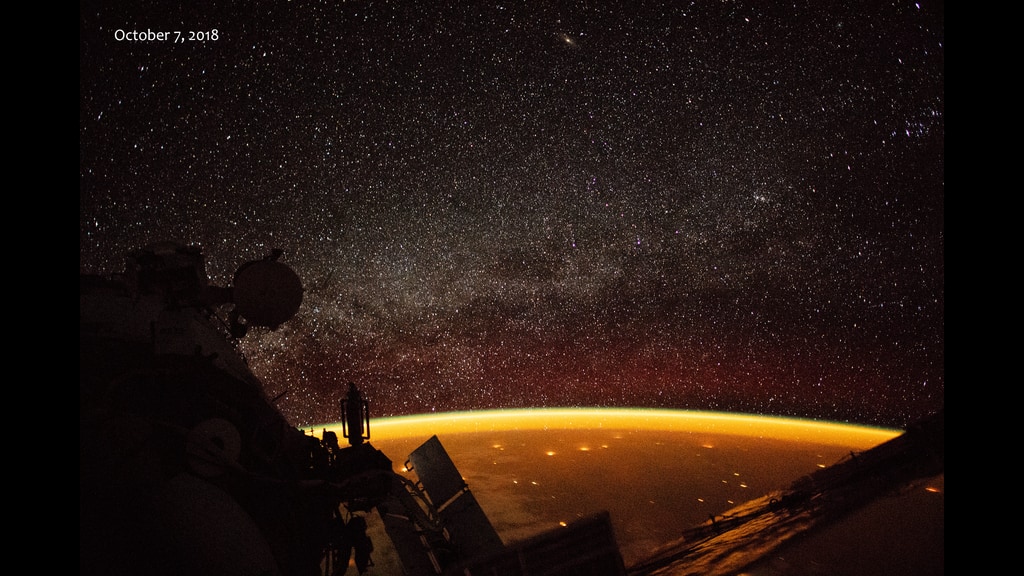Earth
ID: 31115

On October 7, 2018, an astronaut onboard the ISS shot this photograph at an altitude of about 250 miles (400 kilometers) over Australia. In this view, stars appear more numerous along the image center where the plane of the disk-shaped Milky Way galaxy extends into space. The orange colors enveloping Earth are known as airglow—diffuse bands of light that stretch roughly 50 to 400 miles (80 to 645 kilometers) into our atmosphere. This type of airglow is known as chemiluminescence, or nightglow. More than just a pretty light show, airglow reveals some of the workings of the upper reaches of our atmosphere. Studying airglow can help scientists learn about the movement of particles near the interface between Earth and space, including the connections between space weather and Earth weather. Airglow reveals some of the conditions of the upper atmosphere, such as its temperature, shape, and the amounts of different types of gases.
Airglow over Australia

For More Information
Credits
Amy Moran (Global Science and Technology, Inc.): Lead Technical Support
Please give credit for this item to:
NASA, Earth at Night book
NASA, Earth at Night book
Short URL to share this page:
https://svs.gsfc.nasa.gov/31115
Keywords:
GCMD >> Earth Science >> Atmosphere >> Atmospheric Radiation >> Airglow
GCMD >> Location >> Australia
SVS >> Hyperwall
SVS >> Astronaut
SVS >> ISS
NASA Science >> Earth
GCMD keywords can be found on the Internet with the following citation: Olsen, L.M., G. Major, K. Shein, J. Scialdone, S. Ritz, T. Stevens, M. Morahan, A. Aleman, R. Vogel, S. Leicester, H. Weir, M. Meaux, S. Grebas, C.Solomon, M. Holland, T. Northcutt, R. A. Restrepo, R. Bilodeau, 2013. NASA/Global Change Master Directory (GCMD) Earth Science Keywords. Version 8.0.0.0.0
https://svs.gsfc.nasa.gov/31115
Keywords:
GCMD >> Earth Science >> Atmosphere >> Atmospheric Radiation >> Airglow
GCMD >> Location >> Australia
SVS >> Hyperwall
SVS >> Astronaut
SVS >> ISS
NASA Science >> Earth
GCMD keywords can be found on the Internet with the following citation: Olsen, L.M., G. Major, K. Shein, J. Scialdone, S. Ritz, T. Stevens, M. Morahan, A. Aleman, R. Vogel, S. Leicester, H. Weir, M. Meaux, S. Grebas, C.Solomon, M. Holland, T. Northcutt, R. A. Restrepo, R. Bilodeau, 2013. NASA/Global Change Master Directory (GCMD) Earth Science Keywords. Version 8.0.0.0.0











